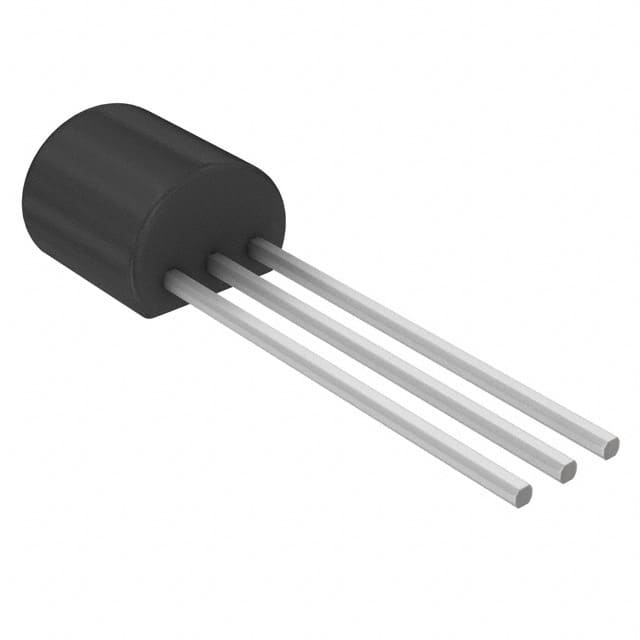2SC1815 Transistor
Product Overview
The 2SC1815 is a bipolar junction transistor (BJT) belonging to the category of small signal transistors. It is commonly used for amplification and switching applications due to its high frequency and low noise characteristics. The transistor is available in various packages such as TO-92, SOT-23, and SMD, making it suitable for different circuit designs. Its essence lies in providing reliable amplification and switching capabilities in electronic circuits.
Packaging/Quantity
The 2SC1815 is typically packaged in reels or tubes, with quantities ranging from hundreds to thousands depending on the manufacturer and distributor.
Specifications
- Maximum Collector-Base Voltage: 60V
- Maximum Collector Current: 150mA
- DC Current Gain (hFE): 70 - 700
- Transition Frequency: 100MHz
- Power Dissipation: 400mW
Detailed Pin Configuration
The 2SC1815 transistor has three pins: 1. Emitter (E) 2. Base (B) 3. Collector (C)
Functional Features
The 2SC1815 transistor offers high voltage and current gain, making it suitable for low-power amplification and switching applications. Its low noise characteristic also makes it ideal for use in audio amplifiers and other sensitive signal processing circuits.
Advantages and Disadvantages
Advantages
- High voltage and current gain
- Low noise
- Wide range of package options
- Suitable for high-frequency applications
Disadvantages
- Relatively low power dissipation capability
- Limited maximum collector current
Working Principles
The 2SC1815 operates based on the principles of bipolar junction transistors, where the flow of current between the emitter and collector is controlled by the base current. By modulating the base current, the transistor can amplify or switch the current flowing through the collector-emitter path.
Detailed Application Field Plans
The 2SC1815 transistor finds extensive use in various electronic applications, including: - Audio amplifiers - Signal processing circuits - Oscillator circuits - Switching circuits - RF amplifiers
Detailed and Complete Alternative Models
Some alternative models to the 2SC1815 include: - 2N3904 - BC547 - BC548 - BC549 - 2N2222
In conclusion, the 2SC1815 transistor is a versatile component that finds widespread use in amplification and switching circuits, offering high voltage and current gain along with low noise characteristics. Its availability in multiple package options further enhances its suitability for diverse electronic designs.
[Word Count: 330]
Senaraikan 10 soalan dan jawapan biasa yang berkaitan dengan aplikasi 2SC1815 dalam penyelesaian teknikal
What is the maximum collector current of 2SC1815?
- The maximum collector current of 2SC1815 is 150mA.
What is the typical hFE (DC current gain) of 2SC1815?
- The typical hFE of 2SC1815 ranges from 70 to 700.
What is the maximum power dissipation of 2SC1815?
- The maximum power dissipation of 2SC1815 is 400mW.
What are the typical applications of 2SC1815?
- 2SC1815 is commonly used in audio amplification, switching, and general purpose applications.
What is the maximum voltage across the collector and emitter of 2SC1815?
- The maximum voltage across the collector and emitter of 2SC1815 is 50V.
Is 2SC1815 suitable for low noise amplifier circuits?
- Yes, 2SC1815 is suitable for low noise amplifier circuits due to its low noise characteristics.
Can 2SC1815 be used in high-frequency applications?
- While 2SC1815 can be used in some high-frequency applications, it is more commonly utilized in low to medium frequency circuits.
What are the recommended operating conditions for 2SC1815?
- The recommended operating conditions for 2SC1815 include a collector current of 10mA to 100mA and a collector-emitter voltage of 20V.
Does 2SC1815 require a heat sink in typical applications?
- In typical applications, 2SC1815 does not require a heat sink due to its moderate power dissipation.
Are there any common failure modes associated with 2SC1815?
- Common failure modes for 2SC1815 include overcurrent stress leading to thermal runaway and breakdown due to excessive voltage. Proper circuit design and protection can mitigate these risks.


